Procurement 101: Sales and Operations Planning (S&OP) – How it works

Table of Contents

Facing challenges in aligning your supply chain with market demands? Sales and Operations Planning (S&OP) is your strategic compass, guiding through integration, technology, and collaboration. Dive into how to navigate S&OP complexities with advanced tools like Oracle, SAP, and Infor, embrace AI for future-ready planning, and foster a culture of continuous improvement for operational excellence.
Let’s explore the essence, hurdles, and emerging trends reshaping S&OP for procurement managers and supply chain professionals.
Understanding the Core of S&OP
S&OP serves as the central nervous system for businesses, integrating plans across sales, operations, finance, and marketing to ensure a unified strategy. This process spans a planning horizon of 18 to 36 months, adapting weekly, monthly, and sometimes annual plans to navigate near and far-term market demands.
It’s not just about matching supply with demand; it’s about fostering a culture of continuous improvement, embracing mistakes as learning opportunities, and instilling a mindset geared towards perpetual evolution.
Difference between S&OP and SCM
S&OP and Supply Chain Management (SCM) are both critical components of an organization’s operational efficiency and strategic success. While they are closely related and often overlap in practice, each serves distinct functions within the broader landscape of supply chain and business planning.
S&OP: Strategic Alignment and Integrated Planning
S&OP focuses on integrating various parts of an organization to ensure that its operational plans are aligned with its strategic goals. It is a decision-making process that balances demand and supply, integrates financial planning, and links high-level strategic plans with day-to-day operations. The key objectives of S&OP include:
- Forecasting Demand: Predicting customer demand to ensure the supply chain can meet it.
- Balancing Supply and Demand: Aligning production and procurement with forecasted demand to optimize inventory levels and avoid excess or shortages.
- Cross-functional Collaboration: Bringing together departments such as sales, marketing, finance, and operations to create a unified plan.
- Strategic Alignment: Ensuring operational plans support the organization’s strategic goals and objectives.
SCM: Execution and Operational Efficiency
SCM, on the other hand, encompasses a broader range of activities aimed at maximizing the efficiency of the supply chain from raw material procurement to product delivery. Its focus is on operational execution, including:
- Procurement: Acquiring raw materials and other goods and services needed for production.
- Manufacturing and Production: Converting raw materials into finished products.
- Logistics and Distribution: Managing the transportation and storage of goods from production sites to the end consumer.
- Supply Chain Coordination and Collaboration: Working with suppliers and distributors to streamline operations and reduce costs.
The Key Differences
The primary difference between S&OP and SCM lies in their scope and focus. S&OP is a strategic planning process that aims to align the organization’s resources and capabilities with market demand and strategic goals. It is more about creating a balanced and consensus-driven plan that guides the organization. SCM is more tactical and operational, focusing on executing the plans efficiently and effectively, managing day-to-day operations, and optimizing the flow of goods and materials through the supply chain.
In essence, S&OP can be seen as the strategic bridge that ensures the company’s operational activities (managed through SCM) are aligned with its broader strategic objectives. While S&OP provides the plan and direction, SCM focuses on the execution and operationalization of these plans to ensure products move efficiently from suppliers to customers.
Any Basic Template of S&OP?
S&OP does not have a one-size-fits-all template or rigid structure. Instead, it is a flexible process tailored to fit the specific needs, scale, and strategic goals of an organization. The essence of S&OP lies in its ability to foster collaboration across different departments, align operational plans with strategic objectives, and balance supply with demand.
Common Elements of S&OP Processes
However, there are common elements and stages that many S&OP processes share, which can be adapted to the unique context of each company.
Executive Buy-in and Leadership: The first step is securing buy-in from the top executives. Leadership support is critical for the success of S&OP, as it ensures that the process receives the necessary resources and attention across the organization.
Cross-functional Team Formation: Assemble a cross-functional team that includes representatives from sales, operations, finance, marketing, and IT. This team will bring diverse perspectives and ensure that all relevant aspects of the business are considered in the planning process.
Data Collection and Analysis: Collect and analyze data from across the organization, including sales forecasts, production capacities, inventory levels, and financial targets. This data serves as the foundation for informed decision-making.
Demand and Supply Review: Conduct regular demand planning sessions to forecast customer demand and supply review meetings to assess production capabilities. These reviews should be based on the collected data and aim to identify any gaps between demand and supply.
Consensus Building: The core of the S&OP process is building consensus among all stakeholders on the best course of action. This involves reconciling differences between sales forecasts and production plans to create a single, unified plan that the entire organization can support.
Execution and Monitoring: Implement the agreed-upon plan and continuously monitor its execution. Regular monitoring allows for adjustments to be made in response to any deviations from the plan. After each cycle, review the outcomes, identify areas for improvement, and make necessary adjustments to the process.
Adaptability and Continuous Improvement
While the above elements are commonly found in S&OP processes, it’s important to emphasize that the specific approach and implementation can vary widely. Organizations may adapt the process to suit their industry, market dynamics, organizational structure, and technological capabilities. Additionally, an effective S&OP process is not static; it involves continuous monitoring, review, and improvement to respond to new challenges and opportunities.
The flexibility and adaptability of the S&OP process are what make it a powerful tool for organizations looking to optimize their operations and achieve strategic alignment.
Tackling the Challenges
The road to effective S&OP is fraught with hurdles, from achieving accurate reporting on key demand and supply inputs to preparing a pre-work analysis that anticipates changes requiring management’s attention. These challenges underscore the necessity for:
Cross-departmental collaboration: Ensuring diverse groups across the organization participate in the S&OP process is critical. It’s about aligning the organization, not just balancing supply with demand.
Data transformation: Converting large data sets from multiple systems into actionable information is essential for making informed decisions.
Incorporating new products and changes: Planning for new products, end-of-life existing products, and changes due to mergers and acquisitions is a pivotal part of the S&OP challenge.
Emerging Trends in S&OP
The landscape of S&OP is continuously evolving, influenced by technological advancements and shifting market dynamics. Key trends include:
Technology Integration: The use of ERP and SCM software, despite the persistence of spreadsheets due to their accessibility and flexibility.
Advanced Analytics and AI: The incorporation of AI and the IoT into S&OP processes is on the rise, enhancing data analysis and decision-making capabilities.
Convergence of Planning and Execution Data: This trend supports more frequent updates to plans, improving the organization’s ability to react to supply chain disruptions and manage risk.
Key Stages in the S&OP Process
The journey of S&OP is marked by distinct stages, each contributing to a comprehensive view of the organization’s operational and strategic roadmap.
Product Review: This initial phase focuses on the health of products in the market, examining the product pipeline, and making decisions on product planning. It’s about setting the stage for what’s to come, ensuring that resources are allocated efficiently and that product offerings align with market demands.
Demand Planning: At this stage, creating an unconstrained forecast that incorporates a holistic view of demand is crucial. This involves analyzing factors such as marketing efforts, consumer trends, and product hierarchies to predict future needs accurately.
Supply Review: Here, the aim is to align the supply plan with the forecasted demand, optimizing inventory and identifying ways to meet demand most profitably. It’s a balancing act that requires a deep understanding of manufacturing capabilities and supply chain logistics.
Enhancing S&OP with Technology
The role of technology in S&OP cannot be overstated. Modern S&OP software solutions provide the tools necessary for detailed scenario planning, real-time analytics, and enhanced collaboration across departments. Leading tools like Oracle S&OP Cloud, SAP Integrated Business Planning, and Infor Sales and Operations Planning offer advanced features that support dynamic S&OP processes, from predictive financial analysis to aggregate planning capabilities.
Integration with ERP and SCM Systems: Leveraging ERP and SCM systems enhances material and resource planning, offering a structured approach to managing supply chain challenges.
The Shift from Spreadsheets to Advanced S&OP Tools: While spreadsheets are widely used due to their flexibility, advanced S&OP tools offer superior data processing capabilities, security, and the ability to leverage AI for better decision-making.
S&OP Best Practices
To transform S&OP from a mere process to a competitive advantage, organizations must embrace several key practices:
Unified Vision and Plan: Creating a cohesive strategy that aligns cross-functional teams under one vision is paramount. This ensures that differing perspectives coalesce into a single, actionable plan.
Proactive Communication: Effective S&OP relies on transparent and ongoing dialogue among all stakeholders. Clear communication channels facilitate the flow of essential information and foster a collaborative environment.
Executive Involvement: Leadership engagement is crucial for driving the S&OP process forward. Executive support not only lends authority to decisions but also helps in resolving conflicts and aligning the organization towards common goals.
Adaptability and Continuous Review: The S&OP process should be dynamic, with regular reviews and adjustments based on performance metrics and external market conditions. This agility allows for timely responses to unforeseen challenges.
Looking Ahead: The Future of S&OP
As the business landscape evolves, so too does the approach to S&OP. Anticipating and adapting to these changes will be crucial for maintaining operational efficiency and strategic agility:
Greater Integration of AI and Machine Learning: The use of AI and machine learning in S&OP is expected to grow, offering deeper insights into demand forecasting, supply chain optimization, and risk management.
Increased Focus on Sustainability: As environmental considerations become more pressing, S&OP processes will need to incorporate sustainability metrics, balancing efficiency with ecological impact.
Enhanced Collaboration Tools: The development of more sophisticated collaboration platforms will enable better coordination among teams, breaking down silos and fostering a more integrated approach to planning.
How CADDi Drawer Can Help
CADDi Drawer, a cutting-edge digital platform designed for the manufacturing and procurement sectors, directly addresses the pressing challenges in data management within S&OP. Its capabilities can provide an innovative solution to many of the hurdles discussed earlier, particularly those related to data inconsistency, fragmentation, and the lack of a centralized system for data sharing and analysis.
Streamline activities in the procurement process
The following features enable you to streamline the time-consuming tasks of data collection and organization in procurement operations.
- Price data and supplier information can be automatically linked to each drawing and can also be exported together.
- By using keyword searches combined with similarity searches, the time spent searching for drawings and data in procurement tasks can be reduced.
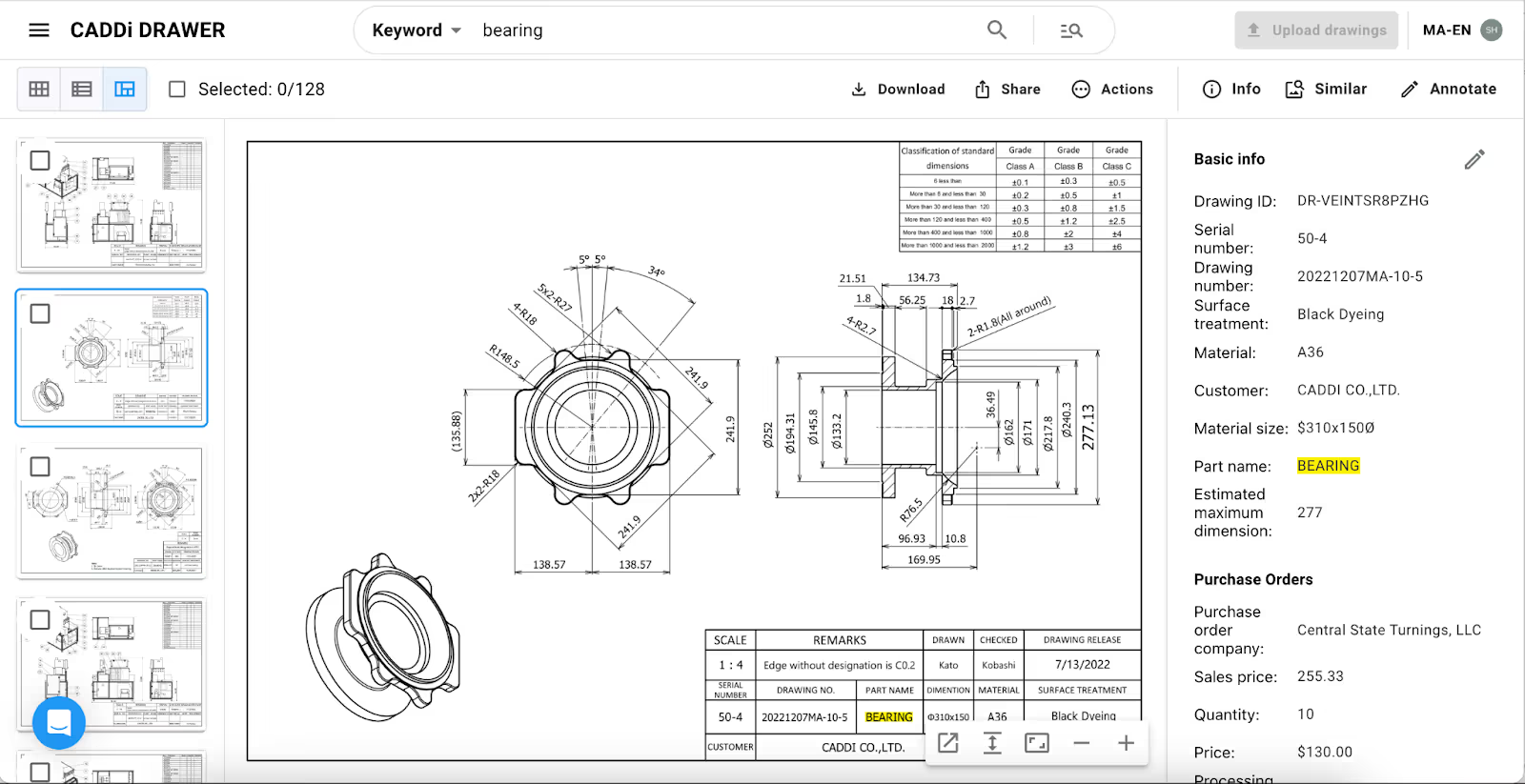
Enhancing Collaboration and Standardization
Collaboration and standardization across the supply chain are crucial for overcoming visibility challenges. CADDi Drawer fosters collaboration by enabling easy sharing and access to data among all supply chain participants. This collaborative environment ensures that everyone is on the same page, enhancing coordination and efficiency. Additionally, the platform supports data standardization, which is vital for integrating data from diverse sources and ensuring that it is comparable and actionable.
CADDi Drawer serves as a System of Insights (SoI), designed to leverage data primarily managed and stored by Systems of Records (SoR), like those represented by ERPs. Utilizing data stored in SoRs and data extracted and structured from drawings by CADDi Drawer, it supports procurement intelligence processes, including analyses and data processing for supplier selection and management, RFQ creation, and quote evaluations.
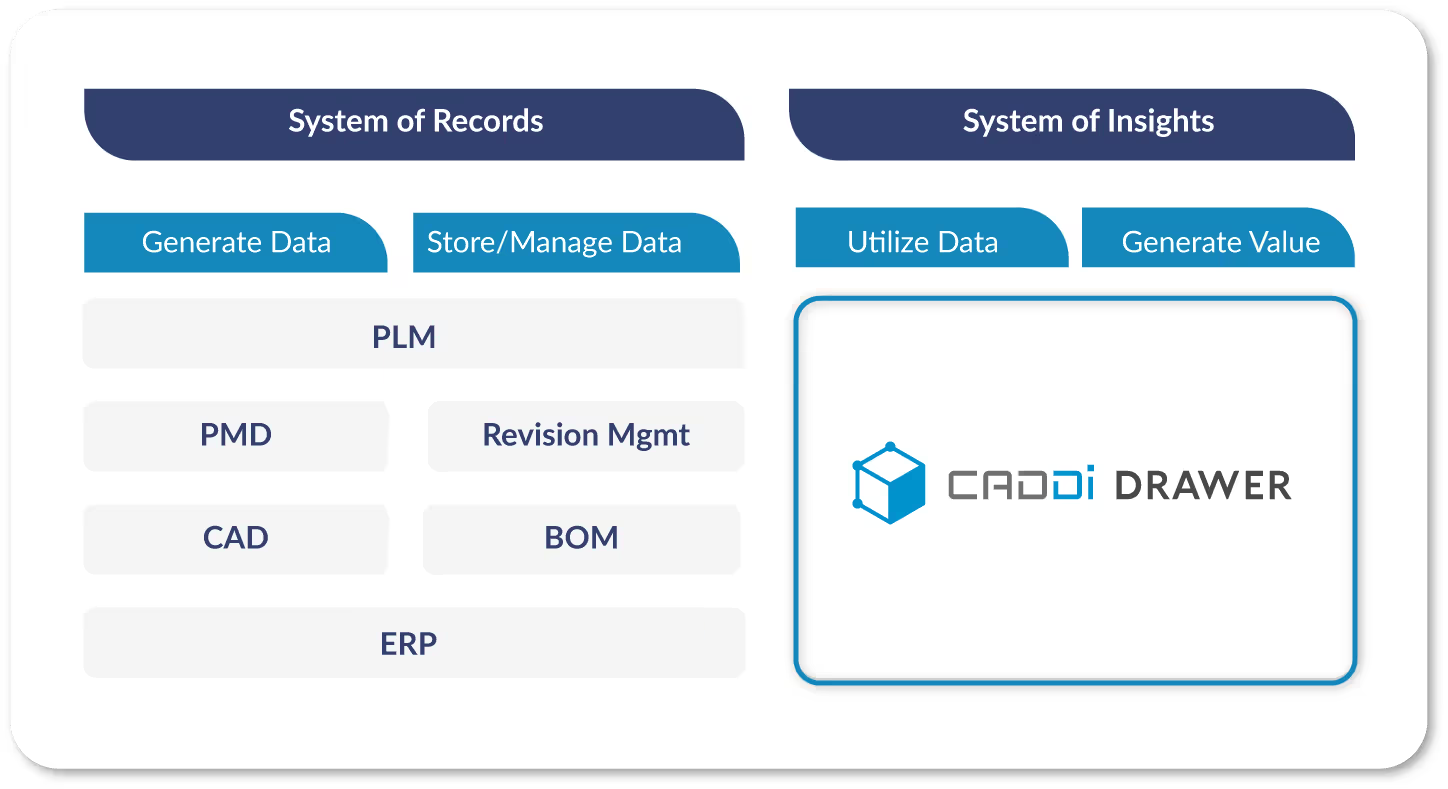
Facing challenges in aligning your supply chain with market demands? Sales and Operations Planning (S&OP) is your strategic compass, guiding through integration, technology, and collaboration. Dive into how to navigate S&OP complexities with advanced tools like Oracle, SAP, and Infor, embrace AI for future-ready planning, and foster a culture of continuous improvement for operational excellence.
Let’s explore the essence, hurdles, and emerging trends reshaping S&OP for procurement managers and supply chain professionals.
Understanding the Core of S&OP
S&OP serves as the central nervous system for businesses, integrating plans across sales, operations, finance, and marketing to ensure a unified strategy. This process spans a planning horizon of 18 to 36 months, adapting weekly, monthly, and sometimes annual plans to navigate near and far-term market demands.
It’s not just about matching supply with demand; it’s about fostering a culture of continuous improvement, embracing mistakes as learning opportunities, and instilling a mindset geared towards perpetual evolution.
Difference between S&OP and SCM
S&OP and Supply Chain Management (SCM) are both critical components of an organization’s operational efficiency and strategic success. While they are closely related and often overlap in practice, each serves distinct functions within the broader landscape of supply chain and business planning.
S&OP: Strategic Alignment and Integrated Planning
S&OP focuses on integrating various parts of an organization to ensure that its operational plans are aligned with its strategic goals. It is a decision-making process that balances demand and supply, integrates financial planning, and links high-level strategic plans with day-to-day operations. The key objectives of S&OP include:
- Forecasting Demand: Predicting customer demand to ensure the supply chain can meet it.
- Balancing Supply and Demand: Aligning production and procurement with forecasted demand to optimize inventory levels and avoid excess or shortages.
- Cross-functional Collaboration: Bringing together departments such as sales, marketing, finance, and operations to create a unified plan.
- Strategic Alignment: Ensuring operational plans support the organization’s strategic goals and objectives.
SCM: Execution and Operational Efficiency
SCM, on the other hand, encompasses a broader range of activities aimed at maximizing the efficiency of the supply chain from raw material procurement to product delivery. Its focus is on operational execution, including:
- Procurement: Acquiring raw materials and other goods and services needed for production.
- Manufacturing and Production: Converting raw materials into finished products.
- Logistics and Distribution: Managing the transportation and storage of goods from production sites to the end consumer.
- Supply Chain Coordination and Collaboration: Working with suppliers and distributors to streamline operations and reduce costs.
The Key Differences
The primary difference between S&OP and SCM lies in their scope and focus. S&OP is a strategic planning process that aims to align the organization’s resources and capabilities with market demand and strategic goals. It is more about creating a balanced and consensus-driven plan that guides the organization. SCM is more tactical and operational, focusing on executing the plans efficiently and effectively, managing day-to-day operations, and optimizing the flow of goods and materials through the supply chain.
In essence, S&OP can be seen as the strategic bridge that ensures the company’s operational activities (managed through SCM) are aligned with its broader strategic objectives. While S&OP provides the plan and direction, SCM focuses on the execution and operationalization of these plans to ensure products move efficiently from suppliers to customers.
Any Basic Template of S&OP?
S&OP does not have a one-size-fits-all template or rigid structure. Instead, it is a flexible process tailored to fit the specific needs, scale, and strategic goals of an organization. The essence of S&OP lies in its ability to foster collaboration across different departments, align operational plans with strategic objectives, and balance supply with demand.
Common Elements of S&OP Processes
However, there are common elements and stages that many S&OP processes share, which can be adapted to the unique context of each company.
Executive Buy-in and Leadership: The first step is securing buy-in from the top executives. Leadership support is critical for the success of S&OP, as it ensures that the process receives the necessary resources and attention across the organization.
Cross-functional Team Formation: Assemble a cross-functional team that includes representatives from sales, operations, finance, marketing, and IT. This team will bring diverse perspectives and ensure that all relevant aspects of the business are considered in the planning process.
Data Collection and Analysis: Collect and analyze data from across the organization, including sales forecasts, production capacities, inventory levels, and financial targets. This data serves as the foundation for informed decision-making.
Demand and Supply Review: Conduct regular demand planning sessions to forecast customer demand and supply review meetings to assess production capabilities. These reviews should be based on the collected data and aim to identify any gaps between demand and supply.
Consensus Building: The core of the S&OP process is building consensus among all stakeholders on the best course of action. This involves reconciling differences between sales forecasts and production plans to create a single, unified plan that the entire organization can support.
Execution and Monitoring: Implement the agreed-upon plan and continuously monitor its execution. Regular monitoring allows for adjustments to be made in response to any deviations from the plan. After each cycle, review the outcomes, identify areas for improvement, and make necessary adjustments to the process.
Adaptability and Continuous Improvement
While the above elements are commonly found in S&OP processes, it’s important to emphasize that the specific approach and implementation can vary widely. Organizations may adapt the process to suit their industry, market dynamics, organizational structure, and technological capabilities. Additionally, an effective S&OP process is not static; it involves continuous monitoring, review, and improvement to respond to new challenges and opportunities.
The flexibility and adaptability of the S&OP process are what make it a powerful tool for organizations looking to optimize their operations and achieve strategic alignment.
Tackling the Challenges
The road to effective S&OP is fraught with hurdles, from achieving accurate reporting on key demand and supply inputs to preparing a pre-work analysis that anticipates changes requiring management’s attention. These challenges underscore the necessity for:
Cross-departmental collaboration: Ensuring diverse groups across the organization participate in the S&OP process is critical. It’s about aligning the organization, not just balancing supply with demand.
Data transformation: Converting large data sets from multiple systems into actionable information is essential for making informed decisions.
Incorporating new products and changes: Planning for new products, end-of-life existing products, and changes due to mergers and acquisitions is a pivotal part of the S&OP challenge.
Emerging Trends in S&OP
The landscape of S&OP is continuously evolving, influenced by technological advancements and shifting market dynamics. Key trends include:
Technology Integration: The use of ERP and SCM software, despite the persistence of spreadsheets due to their accessibility and flexibility.
Advanced Analytics and AI: The incorporation of AI and the IoT into S&OP processes is on the rise, enhancing data analysis and decision-making capabilities.
Convergence of Planning and Execution Data: This trend supports more frequent updates to plans, improving the organization’s ability to react to supply chain disruptions and manage risk.
Key Stages in the S&OP Process
The journey of S&OP is marked by distinct stages, each contributing to a comprehensive view of the organization’s operational and strategic roadmap.
Product Review: This initial phase focuses on the health of products in the market, examining the product pipeline, and making decisions on product planning. It’s about setting the stage for what’s to come, ensuring that resources are allocated efficiently and that product offerings align with market demands.
Demand Planning: At this stage, creating an unconstrained forecast that incorporates a holistic view of demand is crucial. This involves analyzing factors such as marketing efforts, consumer trends, and product hierarchies to predict future needs accurately.
Supply Review: Here, the aim is to align the supply plan with the forecasted demand, optimizing inventory and identifying ways to meet demand most profitably. It’s a balancing act that requires a deep understanding of manufacturing capabilities and supply chain logistics.
Enhancing S&OP with Technology
The role of technology in S&OP cannot be overstated. Modern S&OP software solutions provide the tools necessary for detailed scenario planning, real-time analytics, and enhanced collaboration across departments. Leading tools like Oracle S&OP Cloud, SAP Integrated Business Planning, and Infor Sales and Operations Planning offer advanced features that support dynamic S&OP processes, from predictive financial analysis to aggregate planning capabilities.
Integration with ERP and SCM Systems: Leveraging ERP and SCM systems enhances material and resource planning, offering a structured approach to managing supply chain challenges.
The Shift from Spreadsheets to Advanced S&OP Tools: While spreadsheets are widely used due to their flexibility, advanced S&OP tools offer superior data processing capabilities, security, and the ability to leverage AI for better decision-making.
S&OP Best Practices
To transform S&OP from a mere process to a competitive advantage, organizations must embrace several key practices:
Unified Vision and Plan: Creating a cohesive strategy that aligns cross-functional teams under one vision is paramount. This ensures that differing perspectives coalesce into a single, actionable plan.
Proactive Communication: Effective S&OP relies on transparent and ongoing dialogue among all stakeholders. Clear communication channels facilitate the flow of essential information and foster a collaborative environment.
Executive Involvement: Leadership engagement is crucial for driving the S&OP process forward. Executive support not only lends authority to decisions but also helps in resolving conflicts and aligning the organization towards common goals.
Adaptability and Continuous Review: The S&OP process should be dynamic, with regular reviews and adjustments based on performance metrics and external market conditions. This agility allows for timely responses to unforeseen challenges.
Looking Ahead: The Future of S&OP
As the business landscape evolves, so too does the approach to S&OP. Anticipating and adapting to these changes will be crucial for maintaining operational efficiency and strategic agility:
Greater Integration of AI and Machine Learning: The use of AI and machine learning in S&OP is expected to grow, offering deeper insights into demand forecasting, supply chain optimization, and risk management.
Increased Focus on Sustainability: As environmental considerations become more pressing, S&OP processes will need to incorporate sustainability metrics, balancing efficiency with ecological impact.
Enhanced Collaboration Tools: The development of more sophisticated collaboration platforms will enable better coordination among teams, breaking down silos and fostering a more integrated approach to planning.
How CADDi Drawer Can Help
CADDi Drawer, a cutting-edge digital platform designed for the manufacturing and procurement sectors, directly addresses the pressing challenges in data management within S&OP. Its capabilities can provide an innovative solution to many of the hurdles discussed earlier, particularly those related to data inconsistency, fragmentation, and the lack of a centralized system for data sharing and analysis.
Streamline activities in the procurement process
The following features enable you to streamline the time-consuming tasks of data collection and organization in procurement operations.
- Price data and supplier information can be automatically linked to each drawing and can also be exported together.
- By using keyword searches combined with similarity searches, the time spent searching for drawings and data in procurement tasks can be reduced.

Enhancing Collaboration and Standardization
Collaboration and standardization across the supply chain are crucial for overcoming visibility challenges. CADDi Drawer fosters collaboration by enabling easy sharing and access to data among all supply chain participants. This collaborative environment ensures that everyone is on the same page, enhancing coordination and efficiency. Additionally, the platform supports data standardization, which is vital for integrating data from diverse sources and ensuring that it is comparable and actionable.
CADDi Drawer serves as a System of Insights (SoI), designed to leverage data primarily managed and stored by Systems of Records (SoR), like those represented by ERPs. Utilizing data stored in SoRs and data extracted and structured from drawings by CADDi Drawer, it supports procurement intelligence processes, including analyses and data processing for supplier selection and management, RFQ creation, and quote evaluations.

Ready to see CADDi Drawer in action? Get a personalized demo.
Subscribe to our Blog!
Related Resources
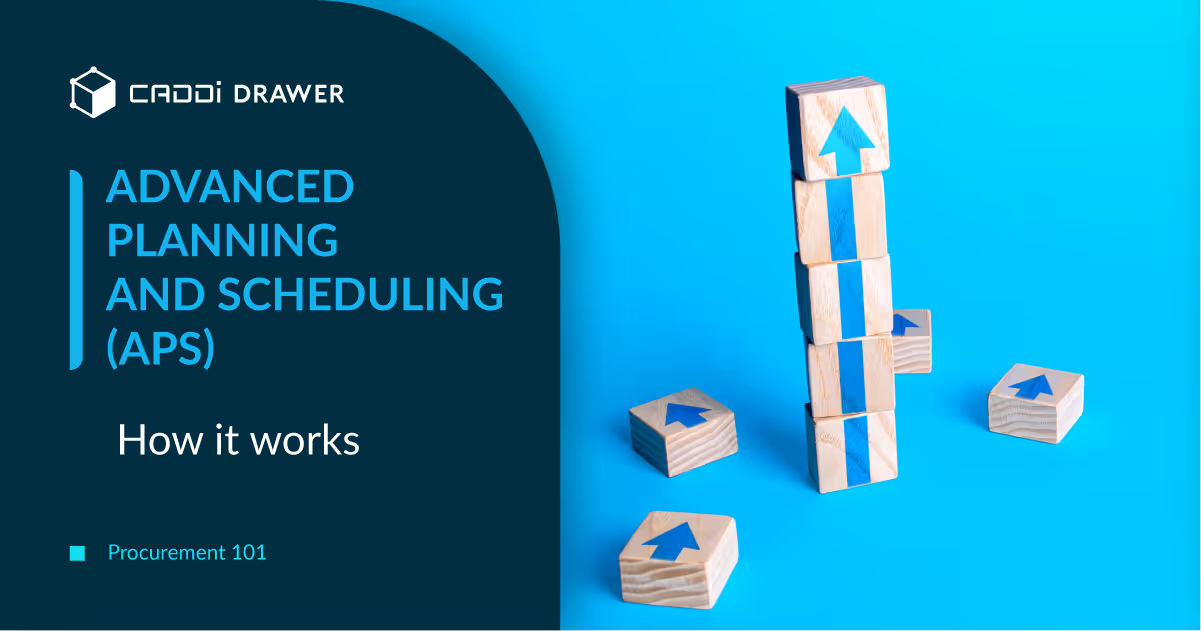

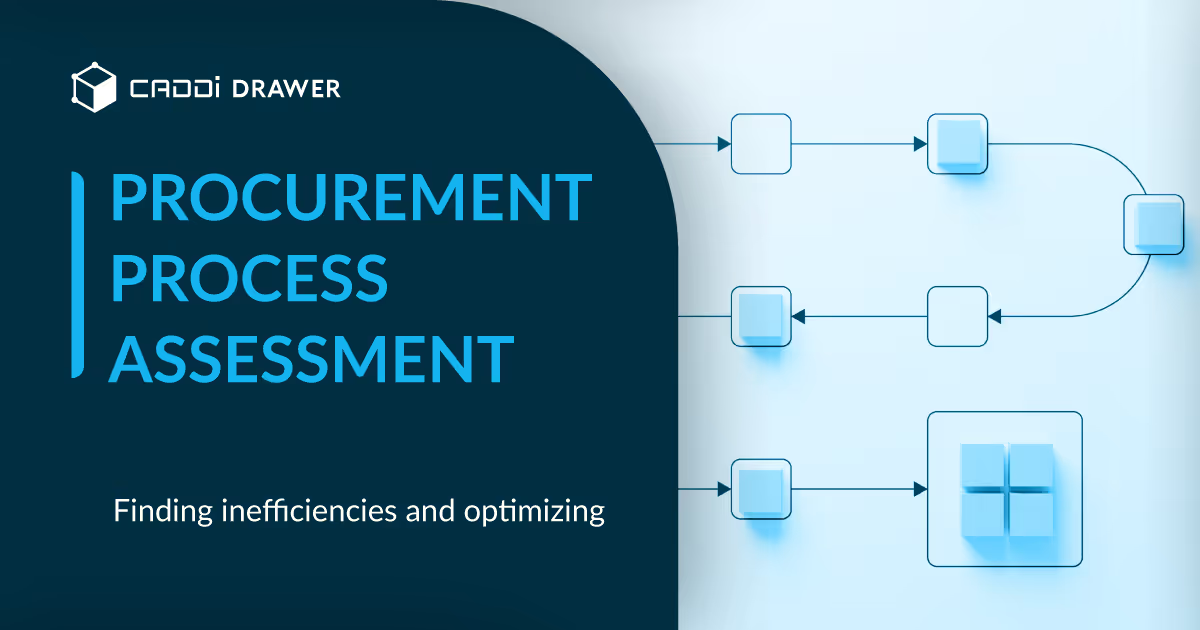

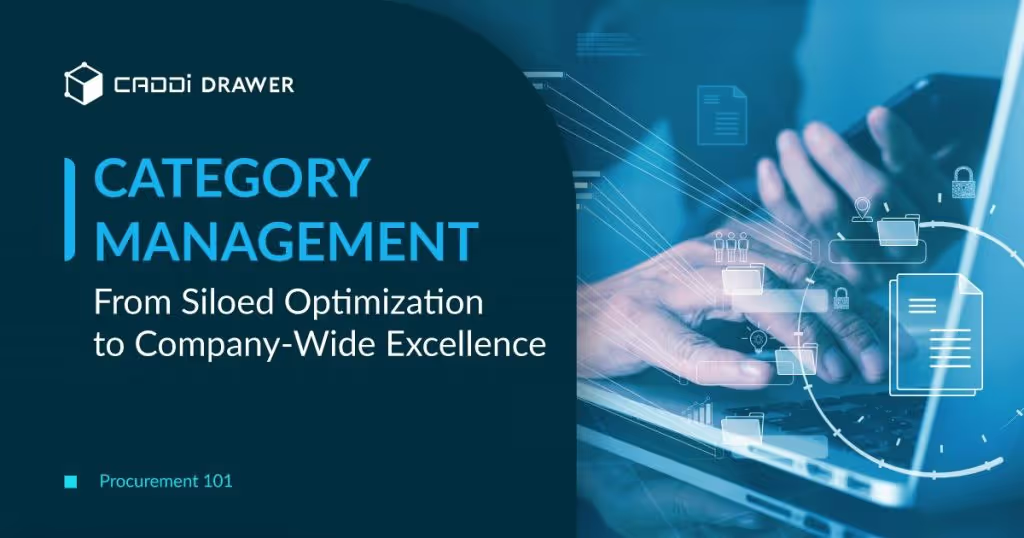







.svg)



.svg)
.svg)
.svg)


